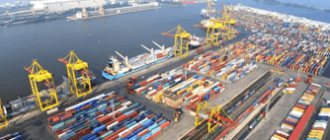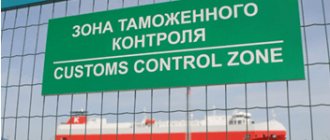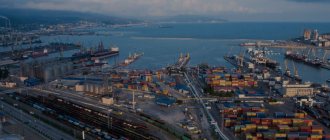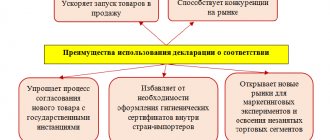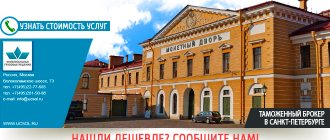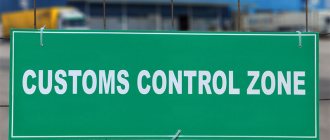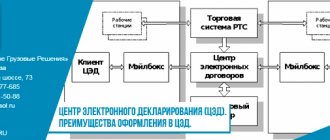Quick links
Delivery cost / Import / Export / Price lists and contracts / Groupage cargo (CL) / Vladivostok (CL) / St. Petersburg (CL) / Customs lawyer / Consultation on customs issues / Contacts / Call / Send a letter
The OnlogSystem company is a licensed customs representative and authorized economic operator that provides customs clearance services for cargo at all major customs posts located in the region of operation of the Vostochny customs post.
Services of a customs representative in the port of Vostochny Documents required for customs clearance of cargo in the port of Vostochny Prices for customs broker services in Vostochny foreign economic activity on the “one window” principle Advantages of cooperation with OnlogSystem Customs houses and customs posts located in the region of operation of the port of Vostochny
Vostochny Seaport is a seaport of federal significance, located in Wrangel Bay, Sea of Japan. The Vostochny port is part of the largest Russian transport hub in Russia on the Pacific Ocean, Vostochny-Nakhodka, and has access to the Trans-Siberian Railway through the Nakhodka railway junction station, the Corner Line.
If it is necessary to organize customs clearance at the destination or to apply for a customs transit procedure, we provide services for customs clearance of goods arriving at the Vostochny seaport. Submission of DT is also possible to the Vladivostok EDC (Electronic Declaration Center).
A customs representative in the port of Vostochny is an agent representing the interests of the customer, a participant in foreign trade activities, in the process of his interaction with customs authorities. A customs representative, also known as a customs broker, carries out his activities on the basis of a license issued to him upon entry into the Register of Customs Representatives, and has the necessary expert knowledge to undergo customs clearance.
Cooperation with a reliable customs representative can significantly reduce the financial and time costs associated with customs clearance and minimize the likelihood of additional customs control measures being imposed.
International sea delivery to Vladivostok and transportation by sea from Vladivostok
Vladivostok is the gateway of the Russian Federation in the east. Every day, various goods cross the customs of a given city. Cargoes such as fish, crayfish, scallops, shrimp, shellfish, caviar, non-ferrous and ferrous metal products, animal feed, and industrial waste are exported. Cars, auto parts for them, electronic goods, plastics and their products, meat, rubber products and other goods are imported into our country through Vladivostok.
Absolutely any legal cargo is sent to and from Vladivostok by sea. Cargoes are transported to Vladivostok from China, Korea, Japan, Kazakhstan, Mongolia, Thailand, Vietnam, India, European countries, the USA and various other countries; goods from Vladivostok are also exported to almost all points on earth.
Primorsky Krai has a well-developed transport infrastructure. One of the largest seaports in the Russian Federation, Vostochny, is located there.
Customs broker in Vladivostok
Customs brokers clear cargo in the Eastern port of Nakhodka customs. Customs clearance here is carried out at a very high speed; goods from Vladivostok to the mainland are carried out using express trains.
Vostochny is the deepest seaport located in the Far East. Sea boats with a draft of up to 15.5 meters can come there. Trade with China by sea is carried out through this port.
The Eastern port is located 20 kilometers from Nakhodka. – the final point of the Trans-Siberian Railway
Contacts and details
| Name | Customs post Seaport Vostochny |
| Customs code | 10714040 |
| Customs clearance | produced |
| Parent's name | Nakhodka customs |
| Short name | t/p Seaport Vostochny |
| Kind of transport | Sea, River |
| Full address | 692941 Primorsky Krai, town. Wrangel, st. Intraportovaya, 21 |
| Telephone | +7 |
| Fax | +7 |
| [email protected] | |
| Website | https://dvtu.customs.ru/folder/130546 |
| Working with ATA carnets | Yes |
| OKATO code | 5000 |
| SOATO code | 1105 |
t/p Seaport Vostochny on the map
Other posts and customs of Nakhodka and Primorsky Krai
- Nakhodka customs (10714000)
- Customs post Seaport Nakhodka (10714060)
See also: Nakhodka, Primorsky Krai, Customs posts, Airports, Seaports
Customs clearance and clearance in Vladivostok
Since a special economic zone has been established in Vladivostok (Free Port of Vladivostok), it is possible to undergo customs procedures promptly and with minimized costs. The customs broker is familiar with all the features of customs clearance in Vladivostok, so he will help the foreign trade participant take advantage of all possible advantages and concessions at the customs post.
At the moment, in Vladivostok there are more than 20 large temporary storage warehouses, equipped with everything necessary for storing goods there and performing customs clearance.
Advantages of cooperation with OnlogSystem
| Own licenses of an authorized economic operator and customs representative |
| Fully transparent pricing and reliable operation scheme |
| More than 15 years of experience in the field of foreign trade |
| Personal manager, operational consulting, individual approach |
| Possibility of subscription service |
| Guarantees of DT release within 24 hours, release without technical equipment, DT submission within 3 hours* |
*Confirmed individually, based on the compliance of the package of documents provided by the client, clause 7 of the Decision of the EEC Board No. 42. It is drawn up on company letterhead with the stamp and signature of the manager.
You can ask our specialists for more detailed information about each of the advantages by seeking advice through any convenient feedback form located on our website or using the specified contacts.
Tariffs for transshipment and storage of containers at a temporary storage warehouse in Vladivostok
| Paragraph |
|
| |
| 1. TRANSHIPMENT: | |||
| 1.1. | Import containers (ground vehicle) | ||
| 3 category | |||
| 1.1.1. | ISO 20'/40' container, loaded, shipped to railway transport | container | 7 800,00 |
| 1.1.2. | ISO 20'/40' empty container shipped to railway transport | container | 3 400,00 |
| 1.1.3. | ISO 20'/40' container, loaded, empty, shipped by road | container | 4 550,00 |
| 1.1.4. | Oversized container | container | 7 800,00 |
| 1.1.1.1. | Import containers (coaster): | ||
| 2nd category | |||
| 1.1.1.1.1. | ISO container 20'/40' loaded, shipped on a coaster | container | 7 800,00 |
| 1.1.1.1.2. | ISO container 20'/40' empty, shipped on a coaster | container | 5 850,00 |
| 1.1.1.1.3. | Oversized container shipped by coaster | container | 7 800,00 |
| 1.2. | Export containers (ground vehicle) | ||
| 3 category | |||
| 1.2.1. | ISO container 20'/40' loaded, empty, arriving by rail | container | 2 600,00 |
| 1.2.2. | ISO container 20'/40' loaded, empty arriving by road | container | 2 000,00 |
| 1.2.3. | Oversized container | container | 2 600,00 |
| 1.2.1 | Export containers (coaster): | ||
| 2nd category | |||
| 1.2.1.1 | ISO container 20'/40' loaded, arriving on a coaster | container | 5 200,00 |
| 1.2.1.2. | ISO 20'/40' empty container arriving on a coaster | container | 2 600,00 |
| 1.2.1.3. | Oversized container arriving by coaster | container | 2 600,00 |
| 1.3. | Transit containers (ground vehicle) | ||
| 3 category | |||
| 1.3.1. | ISO container 20'/40' loaded, empty, shipped to sea | container | 2 600,00 |
| 1.3.2. | ISO container 20'/40' loaded, shipped to railway transport | container | 7 800,00 |
| 1.3.3. | Oversized container | container | 7 800,00 |
| 1.4. | Coaster containers (land vehicle/coaster) | ||
| 3 category | |||
| 1.4.1. | ISO container 20'/40' loaded | container | 6 500,00 |
| 1.4.2. | ISO container 20'/40' empty | container | 3 400,00 |
| 1.4.3. | Refrigerated container ISO 20'/40' loaded | container | 8 250,00 |
| 1.4.4. | Oversized container | container | 10 900,00 |
| 2 . | Transshipment tariff surcharges: | ||
| 2.1. | Use of chains and/or special equipment other than a standard spreader | container | 3 088,00 |
| 3. | STORAGE: | ||
| 3.1. | Storage of containers beyond the technological accumulation period: | ||
| 3.1.1. | Empty container import/export, empty transit from/to sea from day 1 to day 7 from day 8 to day 23 from 24 days | TEU/day | 569,00 1 557,00 3 378,00 |
| 3.1.2. | Container loaded/empty import - departing on a coaster; — next through the Terminal warehouse in the mode of transshipment between seaports of foreign countries; — arriving at the Terminal's covered warehouse for loading/unloading cargo from day 1 to day 7 from day 8 to day 23 from 24 days | TEU/day | 569,00 1 557,00 3 378,00 |
| 3.1.3. | Loaded/empty import container shipped by road from day 1 to day 16 from 17 days | TEU/day | 1 557,00 3 378,00 |
| 3.1.4. | Container loaded transit from sea from day 1 to day 16 from 17 days | TEU/day | 1 557,00 3 378,00 |
| 3.1.5. | Container loaded with imports shipped to railway transport from day 1 to day 10 from 11 days | TEU/day | 1 557,00 3 378,00 |
| 3.1.6. | Container loaded for export, loaded for transit at sea from 1 day | TEU/day | 800,00 |
| 3.1.7. | Refrigerated container, loaded, import/export/transit from 1 day | container /day | 3 872,00 |
| 3.1.8. | Refrigerated container, loaded, not moved across the border of the Russian Federation from 1 day | container /day | 1 948,60 |
| 3.1.9. | Container loaded/empty, not transported across the border of the Russian Federation from day 1 to day 9 from day 10 to day 25 from day 26 | TEU/day | 232,40 526,00 1 180,40 |
| 3.1.10. | Oversized container export/import/transit/not moved across the border of the Russian Federationfrom 1 day | TEU/day | 569,00 |
| 3.2. | Storage of empty containers in excess of the agreed technological accumulation quota: | ||
| 3.2.1. | Quota for technological accumulation of empty containers | TEU | On agreement of the parties |
| 3.2.2. | Storage of empty containers in excess of the quota for technological accumulation of empty containers | TEU/day | 1 557,00 |
There are no restrictions on the product group. All cargo is registered - bulk, large, dangerous, perishable, live animals and others.
CPS "Portal Sea Port": from words to deeds
The maxim that time will put everything in its place can be fully applied to the situation that has been developing over the last three years around the Seaport Portal Software Complex (KPS). If it all started with a sharp, sometimes aggressive rejection of it, today the process takes on completely civilized forms. Customs and participants in foreign economic activity (FEA) began to see real prospects for the practical application of CPS.
It is known that recently this product has been introduced in all customs authorities of the North-West Customs Administration (NWCU), in the region of operation of which there are sea checkpoints. As the department explained, the complex, the trial operation of which the Federal Customs Service of Russia began in November 2015, is based on the “single window” principle.
As explained in the NWTU, “the system, which should ensure electronic interaction of all participants in the process of registration of goods and vehicles at sea checkpoints, is aimed at creating favorable conditions for accelerating trade turnover across the customs border of the Eurasian Economic Union (EAEU), reducing the time when performing customs operations , increasing the efficiency of customs control.
Software tools make it possible to organize joint work in the ports of Russia of foreign trade participants, federal executive authorities (FEB) and other subjects of maritime transport based on the principles and mechanisms of the “single window”, electronic document management, designed to ensure the possibility of a complete transition to paperless document flow when carrying out customs and other operations at sea checkpoints."
To implement this task, the Federal Customs Service of Russia is now actively developing systems for preliminary information (PI) of customs authorities on goods transported by sea. KSP is a communication platform that ensures information exchange between participants in international maritime transport, interaction between state control authorities (GKO) and interested parties in the process of processing goods and vehicles at sea checkpoints. With the help of the CPS, participants in foreign trade activities, before the vessel arrives at the port, submit preliminary information about the goods to the customs authority in the prescribed form, and carriers - about sea vessels. Other State Defense Committees can use this information to determine the forms of veterinary, phytosanitary, sanitary-quarantine, and border control.
Work ahead
The NWTU clarified that the CPS makes it possible to make decisions on unloading goods from a ship even before it arrives at the port, to indicate to the participants in the process the need to submit certain permits in advance, which ultimately allows reducing the time of registration of sea vessels in the port. Access to the system is available on the website of the Federal Customs Service of Russia: https://sea.customs.ru.
In the region where NWTU operates, the portal is used by more than 250 foreign trade participants: 26 marine terminal operators, 184 carriers, 22 agency companies, 10 recipients/senders. Over the 9 months of this year, in the region where NWTU operates, out of 15 thousand ship calls, 3,878 electronic ship cases were processed through the system, including the arrival and departure of ships. Almost 30% of packages of documents for ships and cargo are submitted to customs authorities through the portal.
The leader in its use is the Baltic Customs, where from July 1, 2021, the KPS operates at all customs posts. A unified information platform unites stevedores, sea carriers and State Defense Committees working in the Big Port of St. Petersburg. Its version is integrated with the information systems of the border service of the FSB of Russia, Rosselkhoznadzor and Rospotrebnadzor.
The customs explained that the technology provides for the gradual presentation at different stages of the technological process by declarants and carriers of information about the cargo and the vessel as they receive information and prepare documents. The object of automation is the information interaction of participants in maritime transportation, as well as the interdepartmental information exchange of customs authorities with other State Defense Committees and the port administration during operations for customs and other types of state control upon the arrival and departure of ships and the goods they transport to the port.
Now any of the participants in the process can transmit or receive information, simultaneously be its source and recipient at various stages and procedures. The portal allows you to submit preliminary information about goods, as well as packages of electronic documents and information about the planned arrival of sea and river vessels to the territory of the EAEU. Similar opportunities exist when they leave. With the help of the KPS, instructions are given for loading/unloading goods, decisions on loading are made, and the results of state control are documented.
The portal allows you to generate preliminary information about goods (PIT) based on a preliminary declaration of goods (PDD). The declarant can generate a PIT by downloading information from the PTD using special programs, or by uploading the PTD to an XML file and sending it to the KPS through the “Personal Account” service on the Russian Federal Customs Service portal. To do this, you only need to have an electronic signature.
Save time
Currently, 32 shipping lines and agency companies submit preliminary information to the Baltic Customs. The use of the CPS has made it possible to reduce the time required to complete customs operations in relation to ships and the goods they transport. An important step in the development of the system will be the presentation of information in a volume comparable to the data contained in the DTP. This will allow customs to effectively and timely assess the level of risk at the stage of arrival of the vessel and cargo, and the portal will become a kind of mechanism for objectively assessing the level of risks in relation to incoming goods.
It should be noted that, together with a number of shipping line agents, stevedoring companies and foreign trade participants, Baltic Customs has been successfully conducting several experiments since October 2016. Including the formation of a ship file in electronic form, the implementation of a one-time check by all state bonds in one place, the release of goods before the end of unloading from the vessel, the purpose of the latter is to achieve the exercise of the right of a foreign trade participant to release goods before unloading, as provided for in paragraph 19.14 of Government Order 1125 -r "Road map".
“The goal of any participant in foreign economic activity is to quickly receive the goods arriving at his address, preferably to his own warehouse and with minimal costs,” noted Yuri Molokin, director of the Legion branch of Customs Representative LLC operating in the port. — An important factor in this matter is the speed of verification activities carried out by various State Defense Committees, including customs, Rosselkhoznadzor, Rospotrebnadzor, as well as the actual release of goods for domestic consumption in accordance with the requirements of customs legislation.
Our company carries out customs clearance of goods transported by sea, and for us it is very important to have the principle of entering the necessary information once in one place and the possibility of promptly obtaining permission to import and release cargo. That's why we started using CPS in our work. With its help, we process most of the goods arriving at our address in the Big Port of St. Petersburg. All document flow occurs in electronic form.”
Based on the PDD, the company’s specialists generate and send to the KPS preliminary information about the product, to which the carrier automatically “attaches” a package of documents for the vessel (PDS). In this case, the customs authority, even before the vehicle arrives at the port, has the preliminary information necessary to make a decision on conducting a commission and issuing a permit for unloading. He also sends notifications to other State Defense Committees so that they can carry out control and make decisions on the product.
As a result, at the time of cargo arrival, the declarant has information not only about the upcoming actual or documentary control, but also about the time and place of its implementation. This allows all operations in and outside the port to be planned in advance.
Increasing efficiency
“This year, together with officials from the Gavan customs post of the Baltic Customs, we have developed a new interaction algorithm,” continues Yuri Molokin. — It stipulates that in all cases, actual control of goods is carried out through the CPS on the principle of “single inspection in one place,” both by customs officials and other State Defense Committees. This means that now, when submitting PIT and ensuring actual control of goods if the need for inspection is identified, all control actions occur simultaneously. At the same time, there was no need to re-place the container on the inspection platform. This became possible within the framework of interaction through the CPS.”
As a result, participants in foreign trade activities received significant savings, because moving a refrigerated container to the inspection area costs from 140 to 230 dollars, a day of storage at the port costs 50-60 dollars, and excess use costs from 100 to 450 dollars per day. As experts clarified, the use of a single inspection made it possible to reduce the costs of consignees by at least $290.
The Administration of the Baltic Sea Ports (AMPBM) noted that the use of the CPS by the Baltic Customs in interaction with the seaport "Big Port of St. Petersburg" has had a positive effect on reducing the time required for customs operations in relation to merchant ships, and also allows for increased efficiency of information exchange within approved scheme for organizing passage across the Russian state border. The AMBBM hopes that over time, the finalized portal will help increase the competitiveness and efficiency of Russian seaports.
Let us note that the use of the CPS has already allowed the port administration to provide customs and other government agencies with information about upcoming ship calls in the form of a daily schedule. Information about changes in it is also promptly submitted to all State Defense Committees. It is worth explaining that the system implements the function of direct exchange with the information system of state port control.
“KPS ensures the continuity of the logistics process and optimizes operations, which allows reducing the time spent by goods in the seaport. This is an important project that helps to increase the competitiveness of our seaports and optimize all clearance processes,” noted the AMBBM. “Currently, about 11 shipping lines and agency companies operating in the region of operation of the Baltic Customs provide preliminary information through the KPS.”
Everything is so rosy
Note that the CPS, developed taking into account a wider range of tasks, is designed to significantly facilitate document flow for all participants in the logistics chain: sender, broker, carrier, stevedore and state bonds. Its main task is to document ships and the goods they transport on the basis of electronic document management.
Since the CPS makes it possible to collect the data necessary to make a decision on the release of goods even before the vessel arrives at the port, already at the time of the start of cargo operations, some containers can have the status of “released for free circulation” in accordance with the previously declared customs procedure and be delivered directly from board to recipients .
At the same time, sea carriers operating in the North-West are asking to improve online customs technologies. Without this, in their opinion, it will not be possible to simplify the registration of courts, as was intended when the CPS was created. So far, as entrepreneurs admit, working with the portal is a burden for them, requiring additional labor costs. At the same time, the Federal Customs Service of Russia promised something else: the introduction of the CPS will reduce the time of transactions with goods at the sea checkpoint, reduce the financial costs of market participants and end consumers of imported goods. However, today everyone recognizes that the CPS needs to be brought to fruition.
It is especially burdensome for container lines operating in Kaliningrad to work with the system. They have to manually enter information about hundreds and sometimes thousands of containers. The fact is that the passage to Kaliningrad from the ports of Gdansk and Klaipeda takes 4-6 hours. This time is not enough to enter all the necessary data about the goods into the customs system.
For comparison: containers from Rotterdam to St. Petersburg take up to two days, but even this period, as experts note, is not enough for forwarders, maritime agents and other participants in the process to exchange information and verify information. At the same time, carriers were not relieved of the obligation to provide information on paper.
Experts explained that when registering arrival, accompanying documents are often used, which are needed not only by customs, but also by services involved in veterinary supervision, sanitary-quarantine and quarantine-phytosanitary control. According to current legislation, they must be submitted in paper form, sometimes with customs marks.
In addition, maritime carriers operating in certain language segments of electronic exchange note that the electronic language through which lines and shipowners communicate differs from the format laid down in the CPS. Naval agents are also forced to manually enter information into the information systems of other State Defense Committees.
Foreign trade participants fear that if the submission of preliminary information using the CPS in its current form becomes mandatory for everyone, then the time to cross the border will increase significantly. As a result, the cost of sea transportation will increase, which will affect both cargo owners and end consumers. In this regard, an outflow of container cargo from Russian ports to the Baltic states and Finland cannot be ruled out.
At the same time, participants in maritime transportation generally recognize the attractive idea of implementing this software tool, which allows simplifying the procedure for registering ships and cargo. However, as already noted, the system needs to be improved taking into account the comments of the business.
“There is a feeling that the proposed model of electronic interaction is a kind of intermediate stage that should ultimately result in something,” says Galina Balandina, head of the federal Center for Support of Foreign Economic Activity and Regional Development. — The question is: where is the optimal model that justifies the current additional costs of foreign trade participants? It seems to me that it would be correct if the Federal Customs Service of Russia clarified to participants in foreign trade activities that, for example, in 3-4 years their work will be transformed into a system that will allow them to obtain certain advantages.”
Experts also noted that the process of registering an electronic court file is so far limited only to imports. That is, for now, only the arrival of the vessel is actually registered at the KPS, and the departure is still in paper form. Thus, the Containerships line has already repeatedly expressed its desire and readiness to work in export. The Baltic customs is only showing interest in this area.
According to the line’s specialists, conducting an experiment to create an electronic ship file for departure in electronic form is associated with existing shortcomings of the CPS, namely, the lengthy processing of orders for loading export goods, especially when there are a large number of them and a wide range of products.
Let us remind you that at the end of September this year, Baltic Customs and Containerships signed an agreement on information interaction, within the framework of which data is now being exchanged. The document stipulates that the line before the vessel approaches presents a cargo plan for unloading, on the basis of which customs assesses the risks. As a result, the procedure is significantly accelerated. It is worth noting that customs was able to set up work and began to accept messages in the international EDIFACT format. Containerships believes that the presentation of cargo plans brings more positive aspects than previously assumed negative ones.
Let's experiment
Let us remind you that from August 1, at the Ust-Luga customs post of the Kingisepp customs, using the CPS, an experiment is taking place to register a ship case for the departure of a vessel in electronic form. Terminals participating in it: JSC Rosterminalugol, LLC European Sulfur Terminal, LLC Universal Transshipment Complex, sea carrier companies: LLC Neva-Delta Ust-Luga, LLC Rusnautik Shipping Agency Ust-Luga, LLC Inflot Worldwide Ferry Services Rus.”
As part of the experiment, forwarders electronically form orders for the shipment of export goods on the KPS communication platform. Representatives of sea carriers, after loading them onto the vessel, drawing up bills of lading and signing documents by the captain of the vessel, form a package of documents for departure and send it to the portal in the form of an electronic package.
Electronic submission of instructions for shipment by the main bunkering companies operating in the seaport of Ust-Luga of bunker fuel exported as supplies has also been organized. From August to November, the post processed 122 ship cases for departure electronically using the CPS, of which 23 were processed as part of the experiment.
Freight forwarders note that the new software product has made their work much easier. Registration of documents using the portal allows you to see feedback from customs in real time, which speeds up the process. Recognizing the need for some refinement of the program, forwarders note that thanks to KPS, logistics work becomes faster.
The captain of the sea trade port of Ust-Luga, Sergei Zheldybin, told the press secretary of the Kingisepp customs, Olga Dyatko, that a new software product is needed for the efficient operation of all state-owned goods and duties in the port. Its use will reduce the time ships spend in the port and will contribute to an increase in the number of ship calls. The CPS should become a practical basis for the introduction of mandatory preliminary information in relation to goods imported into the customs territory of the EAEU by sea.
Experts recognize that CPS provides a number of advantages, such as performing operations and other types of control in one software tool; the possibility of eliminating paper media; automatic logging; interaction with State Defense Committees and interested parties in real time, online monitoring of the processes of registration, unloading/loading of sea vessels in the port when integrating customs authorities with the UAIS; reduction of vessel downtime in the port due to processing of preliminary information; maintaining a unified database.
Experts believe that work in this direction should become a practical basis for introducing mandatory preliminary information in relation to goods imported into the customs territory of the EAEU by sea.
In relation to the Sea Port CPS and regarding its further development, customs officers and foreign trade participants have high hopes for the EAEU Customs Code, which will come into force next year. Everyone hopes that it will create a clearer and more understandable legal basis for a complete transition to electronic interaction between customs and foreign trade participants and other regulatory authorities.
Evgeniy KALININ
Material provided by the information and analytical review “Customs News”
&qt;
| November 29, 2021 / | Customs |
| Author / | Portal Administration | |||||
| print version |
| Tweet |
Customs clearance of goods from China in Vladivostok and delivery by sea
The most significant trade turnover in Vladivostok is with China. Second place is shared by Korea and Japan. Vladivostok customs is considered one of the most popular, because through it it is possible to send products to any corner of the world.
Customs clearance of goods from China in the city of Vladivostok makes it possible to quickly remove containers from the seaport for further shipment of goods to any region of the Russian Federation from the railway stations of the Primorsky Territory.
The advantage of customs clearance of goods from China in Vladivostok is that excess storage rates and services related to inspection, weighing and other controls are most often much cheaper than similar procedures in the ports of Novorossiysk and St. Petersburg.
Another advantage is that you can immediately register foreign goods at the border in Vladivostok and then use them freely - sell, give away, realize and send them to anywhere in the country by any transport. Otherwise, you will need to arrange customs transit and deliver the cargo under customs control to the place of customs clearance, and you will not be able to use the cargo until customs clearance is completed
International cargo transportation to Nakhodka
provides international class services: with our help you can deliver goods to Nakhodka, the region and any country in the world.
We deliver by the following types of transport:
- automobile;
- railway;
- container;
- air;
- combined (multimodal).
Working with cargo is possible regardless of the size and type of goods. Transportation is carried out exclusively by professionals. Any cargo can be delivered both to and from Nakhodka, including:
- perishable;
- oversized;
- heavy;
- bulk;
- dangerous;
- liquid;
- prefabricated, etc.
Secrets of cargo transportation in Vladivostok
The secret to delivering cargo from any country lies not only in finding a reliable broker in Russia (in Vladivostok), but also in finding a customs broker in that country.
An unverified broker may first tell us some payments to the state, and then, when you deliver the cargo, he will say that all the laws in the country have changed, and you will now pay different duties. That is why before customs clearance, customs clearance, sending cargo or before air delivery, all these points need to be agreed upon.
We coordinate the customs declaration with the customs broker in the import/export country. The customs broker there coordinates with customs, and after that we send the cargo. This is the secret of correct cargo delivery.
If your customs broker in another country does not do this, you may incur additional costs. Therefore, you need not only to find a reliable customs broker in Vladivostok, because the customs representative in Vladivostok is not familiar with the procedures in the country of shipment, but also to find a competent broker in this country.
Export and import of goods does not include any risks associated with cargo delay at customs. Also, when exporting, customs duties are not paid to our state, but are paid only in the country of arrival of the cargo. It is very important to find a reliable broker who will coordinate all selected HS codes, description of goods, customs payments with a customs official.
Foreign trade activities based on the “one window” principle
The OnlogSystem team consists of customs professionals, as well as specialists in the fields of certification, transport logistics and quality inspection and other related areas, which allows us to provide a full range of services in the field of foreign trade, including:
| Fast and professional customs clearance in various cooperation formats: under the seal of a customs representative or within the framework of an agency scheme | |
| International delivery of cargo from various countries of the world to the port of Vostochny and vice versa | |
| The geography of our services includes more than 50 countries, including the largest countries in Europe, Asia, America, Africa, Australia and Oceania | |
| We deliver cargo by all possible modes of transport: air, road, railway, sea, and draw up the most optimal multimodal transportation schemes | |
| We work not only with containers, but also with groupage, hazardous, refrigerated, oversized, bulk, liquid and other types of cargo | |
| Preparation and adjustment of commercial, shipping and permitting documents in accordance with the requirements of customs authorities, necessary to confirm the first method of customs value and customs clearance without CTS | |
| Organization of registration of permits: certificates of conformity, declarations of conformity; state registration certificates; fire certificates; refusal letters and other documentation | |
| Selection, delivery and customs clearance of samples for product certification | |
| Inspection services: pre-shipment quality control of goods, loading control, etc. | |
| Product labeling: mandatory (Data Matrix / KIZ), EAC, adaptive | |
| Possibility of duty-free temporary export of theatrical props, musical instruments and other items necessary for participation in international events - simplified export under the ATA Cantet (possible only if returned in unchanged condition) | |
| A range of legal services, which includes appealing actions and decisions of customs authorities or challenging them in court |
If necessary or at the request of the customer, in addition to the basic range of services for declaring goods, it is possible to provide the above services. You can ask our specialists for more detailed information about each of the advantages by seeking advice through any convenient feedback form located on our website or using the specified contacts.
